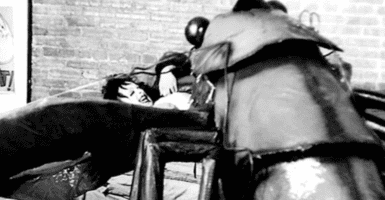Dolphins Identify Each Other By Name, Sort Of
This article is more than 2 years old

Until all the dolphins group up and depart Earth, thanking us for all the fish on their way out, they remain some of humanity’s closest counterparts in many ways. Not the least of which is a healthy blowhole.
For a study published in the Proceedings of the Royal Society B, researchers marked their discovery that dolphins have names. Or, to be more exact, dolphins make personally distinguishable sounds that mimic a companion’s particular whistle in a process dubbed “vocal copying.” (In this case, we’re talking platonic companions, not romantic ones.) The copying occurrs mostly between mothers and children, as well as between adult males who have known each other for extended periods. You can listen to adult males copying each other’s whistles via the link above, but sadly, no dolphins were reported to have called each other, “you ol’ sumbitch.”
Recordings of around 250 bottlenosed dolphins in the wild from 1984-2009 were studied, as well as some from captive dolphins at the Seas aquarium at Walt Disney World. The researchers were culled from Disney, the University of St. Andrews in Scotland, the Chicago Zoological Society, the Sarasota Dolphin Research Program, and the Woods Hole Oceanographic Institute in Massachusetts.
While calling out to those they intend to communicate with, the dolphins will change their mimicking slightly, so as to not confuse others in the area who may be listening, and apparently not looking around. “They all look alike to me” doesn’t seem to be a prejudiced feeling among the dolphin population.
Dr. Stephanie King of St. Andrews said:
The fact that animals are producing whistle copies when they are separated from a close associate supports the idea that dolphins copy another animal’s signature whistle when they want to reunite with that specific individual. Our next step is to use sound playbacks to see how dolphins respond to being matched with a copy of their own signature whistle. If they react we would know that copying of signature whistles can be used to address dolphins.
I dare not think of the negative implications that humans using dolphin communication will undoubtedly bring, and will instead focus on the good side, like being able to tell them that the “Night of the Dolphin” segment from that one “Treehouse of Horrors” episode of The Simpsons is a terrible source of inspiration.












